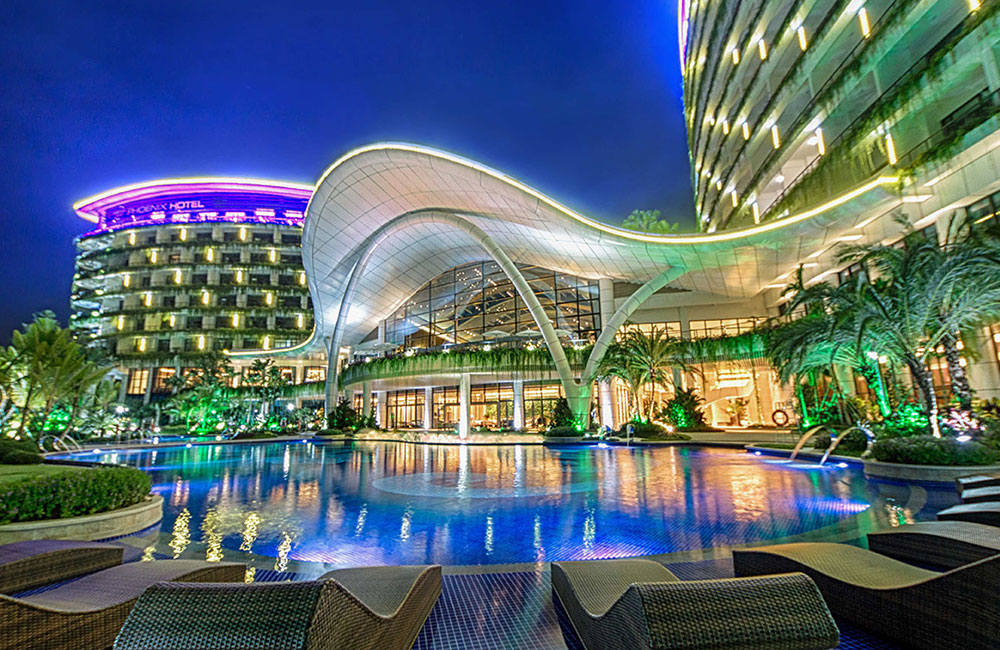Can India overtake China as Global Manufacturing Hub? - Part 1
MQTrader Jesse
Publish date: Fri, 19 Aug 2022, 04:58 PM
Can India overtake China as a global manufacturing hub?
As we know, China is the largest exporting country in the world. China accounts for 28.7% of total global manufacturing output. This accounted for nearly $4 trillion of the country's overall economic output in 2019.
Most of our daily goods are usually made in China. Their export products include electronics, machinery, textiles, chemicals, metals, agriculture, and others. China can become a global manufacturing center mainly because of its population structure, industrial structure, economic indicator, government policy, etc.
However, the advantage of a high population and cheap labor will diminish as the country's economy continues to grow. As this has happened multiple times before, the global manufacturing hub position has been changed from the UK to the U.S and shifted to Japan, and eventually to China.
It’s because as the economy grows, the standard of living improves, so the cost of living and the labor cost will rise. Therefore, it’s only a matter of time if China can maintain itself as a global manufacturing centre.
In the near future, who will replace China? Is India a possible contender?
Starting from India’s Population Structure
Source: countryeconomy.com
From the figure, we can see that India is in an expansive population pyramid, meaning that the pyramid has a larger proportion of the population in the younger age group, with each age group generally smaller than the one below it.
This is a common type of population pyramid for developing countries, whose populations often have high fertility rates and below-average life expectancy. Figures from the United Nations Statistics Division show that India will become the world's most populous country next year (2023), overtaking China with its 1.4 billion people.
Let’s compare the historical population pyramid between India and China.
Source: countryeconomy.com
Using the historical population pyramid table, we found that the current population trend in India is similar to the population trend in China from 1991 to 1999.
Source: The World Bank
Using the World Bank data, we’ve found that China's GDP has grown rapidly from 2000 to the present.
Given the rapid population growth in India, there must be an oversupply of labor, which results in very cheap labor costs in India, and manufacturing companies will eventually choose to produce products in a country with cheap labor to reduce costs.
That’s why in terms of population structure and advantage, India is quite capable of replacing China as the global manufacturing centre.
Industrial Structure
In the history of economic developments, most countries have followed the general law of industrial structural improvement. Namely the sequential development and advancement of The primary industry will be the main industry and slowly move to secondary and then tertiary industrial structures. The development should start with agriculture and move to the manufacturing/architecture and lastly tertiary (service industry).
The development of the manufacturing/architecture industry will rapidly push up GDP. As manufacturing/architecture growth slows, secondary sector GDP will decline and service sector GDP will overtake that of manufacturing/architecture. Eventually, the service sector will become the mainstay of the national economy.
However, India is an exception. Since its independence, the Indian economy has only gone through 2 phases. The industrial structure has shifted directly from primary industry to tertiary (service industry), representing cross-industrialization.
The first stage (1950 ~ 1980)
India is an agricultural country. In 1960, agriculture contributed over 41.31% of GDP, and the rural population accounts for over 72% of the total population. Due to colonialism, the share of the service sector (38.78%) has always been high. After independence, India learned from the Soviet Union to focus development on heavy and basic industries. In several five-year plans, an industrial system is built up that includes metallurgy, mining, machinery, transport machinery, chemical industry, electricity, and especially heavy industry.
However, the heavy industry wasted too many resources and needed a lot of technology and equipment in order to affect the development speed of the secondary industry, this causes the income allocation to progress at a slow speed.
According to the World Bank, 34.7% of the population in India still have less than USD 1 per day at their disposal in the 21st century.
The second stage (1990 ~ now)
India's 1991 economic crisis was the result of a balance of payments deficit due to an over-reliance on imports and other external factors that allowed the World Bank and IMF to require India to open up to foreign participation in its industries, including state-owned enterprises.
The Narsimha Rao government promoted economic liberalisation, marketization, globalisation, and modernization, reforms in the licensing system, reformed public enterprises, and encouraged private enterprise. However, compared to China, India does not have the advantage of developing the manufacturing sector:
- China implemented reforms early, and economic momentum was also released earlier;
- China's location is close to East Asia, which has more developed economic entities such as Japan and Korea.
- Overseas Chinese from various countries invest in China.
However, the information industry is on the rise worldwide, and India has the advantage of a high level of education and English as an official language. Moreover, compared to the tertiary industry, the information industry does not require a lot of lands, resources, infrastructure, and capital investment, but usually depends on investment in human resources and marketing promotion to develop.
Therefore, India is currently focusing on cutting-edge international industries and wants to lead its economy through the information industry. This is the reason why India's tertiary industry is much better than its primary and secondary industries, which are also ahead of China.
In 2020, India's agriculture will account for 18.32% of GDP, manufacturing/architecture will account for 23.52% of GDP, and services will account for 48.89% of GDP. The main reason is that India is focusing on the tertiary industry while other countries are still focusing on the secondary industry, and it has become a world-famous software outsourcing and pharmaceutical country.
Click here to continue to read the Part 2 blog.
Community Feedback
We encourage traders to try out and evaluate the MQ Trader system and provide us feedback on the features you like to see in the system. We have received many positive feedbacks so far, and we are currently compiling and reviewing them for possible inclusion into the next release of the system.
We would like to develop this system based on community feedback to cater for community needs. Thanks to all those who have provided valuable feedback to us. Keep those feedback coming in!
Disclaimer
This article does not represent a BUY or SELL recommendation on the stock covered. Traders and Investors are encouraged to do their own analysis on stocks instead of blindly following any Trading calls raised by various parties in the Internet. We may or may not hold position in the stock covered, or initiate new position in the stock within the next 7 days.
Join us now!
MQ Trader stock analysis system uses Artificial Intelligence (AI), various technical indicators and quantitative data to generate accurate trading signals without the interference of human's emotions and bias against any particular stock. It comprises trading strategies which are very popular among fund managers for analysing stocks.
MQ Trader stock analysis system is SPONSORED for MQ Trader members. To use this amazing tool, you can sign up via MQ Trader Sign Up!
Contact us
Please do not hesitate to contact us if you have any enquiry:
Facebook: https://www.facebook.com/mqtrader
Instagram:https://www.instagram.com/mqtrader
i3messanger: https://messenger.i3investor.com/m/chatmq
YouTube: https://www.youtube.com/channel/UCq-26SGjlQTVQfO7DoEihlg
Email: admin@mqtrader.com
More articles on MQ Expresso






Created by MQTrader Jesse | Oct 26, 2023


Created by MQTrader Jesse | Oct 12, 2023























